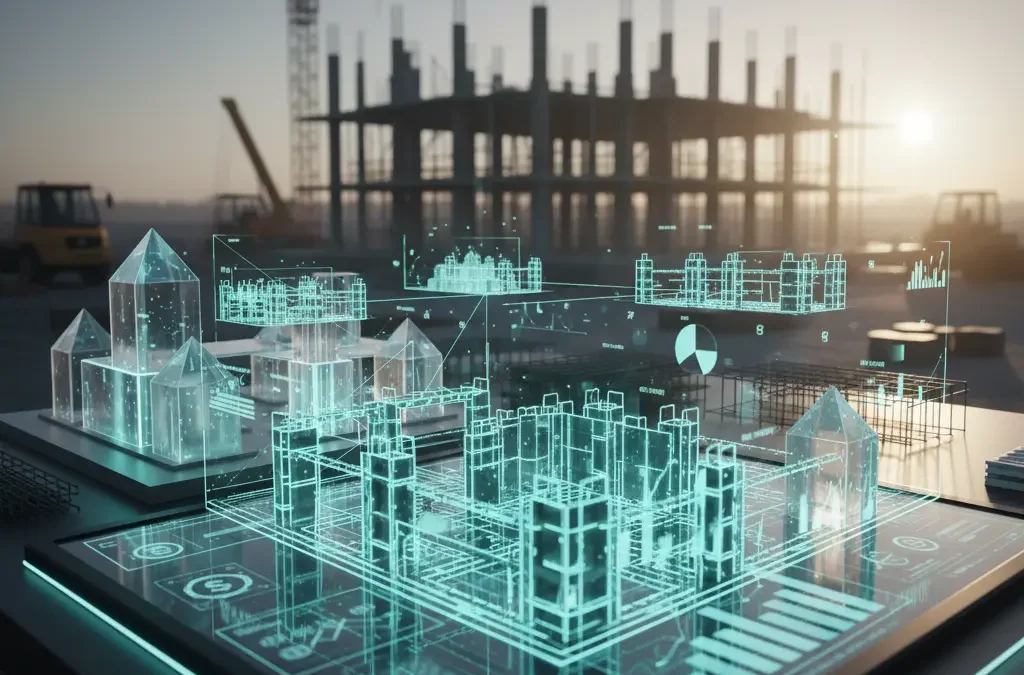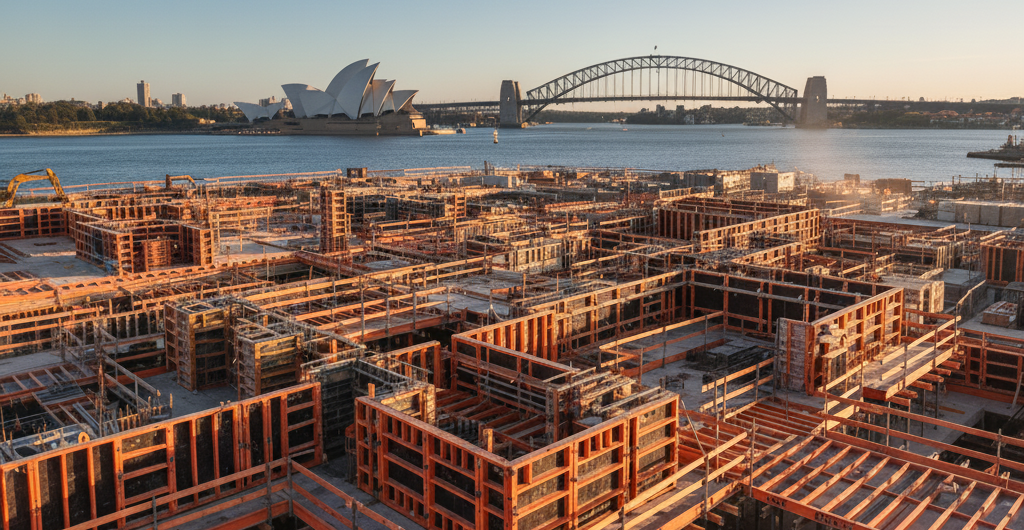
Concrete serves as the foundation for modern structures—strong, reliable, and adaptable. However, it remains one of the biggest sources of carbon emissions worldwide. As construction projects reach new levels of goals, the industry stands at an essential point: what strategies can we use to build more intelligently, efficiently, and sustainably while maintaining structural integrity?
This is where the trend towards eco-friendly formwork and innovative pouring methods takes place. These innovations are transforming the implementation of large-scale projects—from the design and reuse of formwork systems to the smart timing of each pour. It’s no longer about just building tall; it’s about building responsibly.
The shift towards sustainable concreting
In recent years, environmental awareness has reshaped every stage of construction. Concrete production and placement are closely examined, pushing engineers and developers to evaluate efficiency from the beginning.
Formwork, reinforcement (reo), and pouring—together referred to as FRP—are among the most resource-demanding components of any structural package. When handled in traditional ways, these stages result in material waste and energy consumption. Integrated FRP solutions are now enabling manufacturing of the same precision and strength, while minimising the environmental impact.
Reusable and modular formwork systems, combined with smart pour sequencing, allow construction teams to reduce waste, optimise scheduling, and maintain consistent structural integrity. The result? A more sustainable building that meets both environmental goals and project deadlines.
Why sustainable formwork matters
Formwork systems play a crucial role in the base of every concrete structure. Traditional timber or single-use materials not only contribute to project waste but also demand higher costs for disposal and replacement. Sustainable formwork systems, designed for repeated use, can be easily rebuilt, modified, and maintained throughout various projects.
This transition is not only good for the environment; it’s also a smart economic move. Extending the lifecycle of formwork components allows developers and contractors to cut down on recurring material costs, while maintaining extreme safety and quality standards.
More importantly, the design of sustainable formwork is moving beyond the idea of reuse. It’s currently about integration—where the form, reo, and pour phases communicate seamlessly to deliver consistent, efficient outcomes. This alignment effectively reduces waste, not just in terms of physical materials, but also in labour hours and energy use.
Smart pouring: The evolution of precision concreting
Pouring concrete has evolved into an accurate art. Innovative pouring methods use digital modelling, complex sequencing, and environmental analysis to optimise every pour cycle.
By using data-driven pour planning, engineers can anticipate and prevent common site inefficiencies such as over-pouring, poor curing, or structural imbalance. For example, digital simulation tools allow project managers to visualise how concrete will flow, settle, and concrete harden in real time, helping avoid costly errors before they happen.
Smart pouring is also closely linked with sustainable outcomes. Controlled pour sequences reduce energy use, limit water wastage, and improve curing quality—which contribute to long-lasting structures that require less maintenance in the future.
Finally, smart pouring is not only about accuracy but also conscience—pouring with purpose and precision.
The rise of integrated FRP solutions
For many years, the form, reo, and pour stages have frequently been considered as separate processes. Various teams would manage each component, leading to disorganised workflows and communication breakdowns that increase the chances of rework or material waste.
Integrated FRP solutions completely transform the landscape. By bringing together all three stages—form, reo, and pour—into one cohesive system, contractors can guarantee a seamless transition from design to delivery. This integration leads to fewer delays, minimises risk, and ensures a more seamless operation.
A cohesive structural package not only streamline management but also improve results. Every decision, from selecting the right formwork material to timing each pour, is crafted with careful consideration to detail and a commitment to sustainability. The advantages extend throughout the entire project lifecycle—reduced waste, faster completion times, and decreased emissions.
Formwork innovation and material evolution
In recent years, the materials used in formwork have undergone development. Although traditional plywood and steel remain important, innovative composite materials offer lightweight and durable options that are hard to ignore.
Reusable aluminium systems, modular plastic moulds, and hybrid fibre-reinforced components are being adopted to extend the formwork durability while maintaining structural integrity. These systems are not only easier to transport and assemble but also more resistant to corrosion and damage.
By integrating digital layout tools, sustainable formwork systems can be effectively mapped, tracked, and optimised within a centralised database. This enables teams to keep a close eye on the amount of each component use, as well as to determine when maintenance or replacement is necessary. This type of accountability promotes an actual circular economy in construction, transforming what was once considered disposable into long-term assets.
Reducing waste through smart sequencing
Inefficient sequencing is often one of the most underestimated factors leading to construction waste. When pouring and reinforcement are not in sync, it leads to over-ordering of materials, misuse, or leaving them unused.
Smart sequencing solves this issue by synchronising the FRP stages using digital coordination tools. Teams operate with a proactive mindset, clearly understanding the optimal timing for preparing formwork, placing reinforcement, and managing every stage of the pour.
By planning each pour cycle digitally, project managers can effectively simulate curing times, temperature impacts, and logistical challenges before the beginning of work. This degree of oversight reduces interruptions and allows for immediate modifications, ensuring that projects remain on track and environmentally friendly.
Efficiency meets responsibility
Sustainability is not just an option; it’s now a crucial responsibility that aligns with performance. Today’s construction clients and developers are placing a higher value on transparency and accountability. They want assurance that every project not only achieves structural excellence but also has a positive impact on the environment.
Using sustainable formwork and smart pouring, construction teams are doing more than meeting compliance—they’re building reputations as environmentally conscious leaders. And in today’s industry, reputation matters as much as results.
How Future Form delivers sustainable concrete solutions
In the construction industry, sustainability has grown from being a competitive advantage to a fundamental commitment. At Future Form, sustainability and innovation are integrated into the very fabric of every form, reo, and pour. Through the use of low-waste formwork methods and carefully planned pouring schedules, Future Form guarantees that every stage of construction is carried out with accuracy and a commitment to environmental sustainability.
Our approach combines years of on-site expertise with the latest digital technologies. Through advanced scheduling and smart modelling, we synchronise every part of the FRP process—eliminating unnecessary waste, reducing material usage, and ensuring that each pour achieves maximum efficiency with minimal environmental impact.
Future Form’s integrated FRP solutions are built around collaboration. By bringing together design, engineering, and execution into one cohesive package, we guarantee smooth coordination and responsibility at every stage of the project lifecycle. The outcome is a build process that is quicker, more efficient, and smarter.
Our solutions demonstrate that innovation and responsibility can work well together in construction, featuring reusable formwork systems that enhance durability and eco-friendly pouring methods that improve curing efficiency.
Each project we complete shows an ideal combination of strength, efficiency, and a commitment to the environment—because for Future Form, concrete should always come with a conscience.
Looking ahead: building smarter for tomorrow
The development of concrete construction lies in smart solutions and fundamental values. With the industry’s development, adopting sustainable formwork and smart pouring will soon be essential rather than optional.
Those who adopt this transformation today are setting themselves apart as leaders in innovation — reshaping the standards of responsible construction in an environmentally aware world.
Through innovation and collaboration, the industry is proving that sustainable doesn’t mean slower or more expensive —it means smarter, stronger, and longer-lasting. And as an integrated FRP systems continue to advance, we’re stepping closer to a future where every project minimises its impact while improving its legacy.
At Future Form, that future is already here —one form, reo, and pour at a time.
References
Cement Concrete & Aggregates Australia. (2023). Sustainability in concrete construction. Retrieved from https://ccaa.com.au/
Green Building Council of Australia. (2022). Responsible construction practices. Retrieved from https://new.gbca.org.au/
Infrastructure Sustainability Council. (2023). Reducing embodied carbon in infrastructure projects. Retrieved from https://www.iscouncil.org/
CSIRO. (2022). Innovations in sustainable building materials. Retrieved from https://www.csiro.au/





